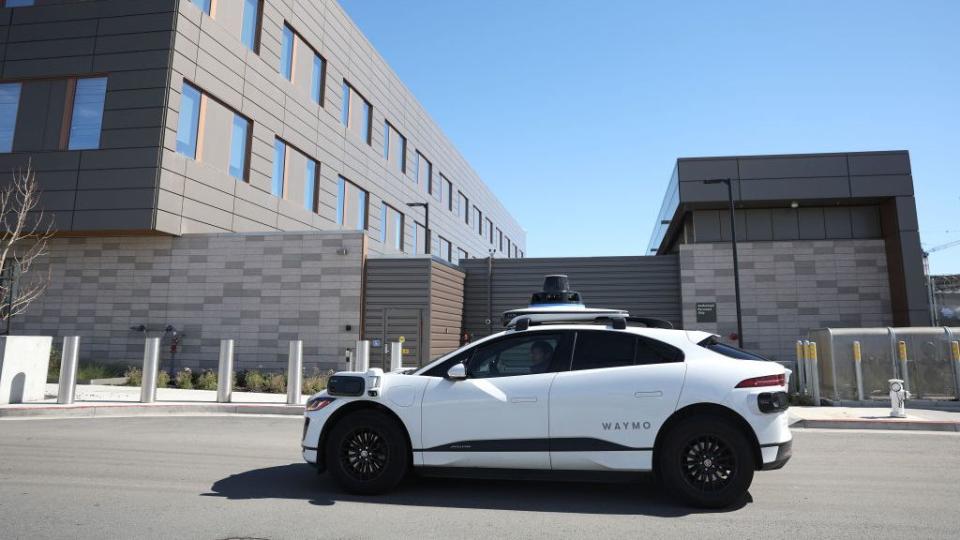Uber Riders Can Now Hail Waymo Robotaxis in This City

Waymo teams up with Uber to allow the ride-hailing app's users to request robotaxis in the metro Phoenix area, where Waymo also operates under its own app.
The robotaxi developer and operator has been busy establishing its service in several cities, after successfully launching operations in San Francisco.
Waymo is experimenting with letting users of other ride-hailing apps request its electric robotaxis, opening up a partnership model that could spread to other cities.
Waymo is currently enjoying a long stretch of uneventful operations, since its license to carry passengers in its driverless taxis in San Francisco at all hours was granted by California regulators months ago. The same cannot be said for Cruise.
Ride-hailing apps had been promising its passengers and investors robotaxis for years now. But despite some very recent operational breakthroughs in Level 4 tech by Cruise and Waymo, as well as a couple of setbacks, the major ride-hailing apps aren't really closer to switching to a self-driving fleet.
On the one hand, that's a problem for their longer-term hopes for profitability; on the other, owning the hardware and paying for the upkeep won't be cheap for these apps either when it does become a reality.
Perhaps outsourcing the robotaxis and their upkeep will be the magic formula.
Uber and Waymo have revealed that Uber customers will now be able to hail Level 4 robotaxis as an option in the metro Phoenix area, where Waymo launched its service a short time ago. This choice applies to customers who request an UberX, Uber Green, Uber Comfort, or Uber Comfort Electric ride through the Uber app.
"As we continue to scale, we want as many people as possible to experience the safety, consistency and delight of riding with the Waymo Driver," said Tekedra Mawakana, co-CEO of Waymo.
The robotaxi developer currently has fleets in operation in San Francisco as well as Los Angeles, where we tried out its service just a few days ago. Austin will be up next, with Waymo currently working on starting robotaxi service in Tesla's hometown.
Waymo's Phoenix fleet can still be scheduled through its own Waymo One app, the company notes, so Uber isn't completely taking over the ride-hailing aspect of the business. Likewise, Uber still maintains a large fleet of human-driven cars in Phoenix, and isn't expected to transition to a robotaxi fleet there overnight, at least for a while.
Uber will not own or operate these particular robotaxis. Rather, this step represents a curious integration of Uber and robotaxi operations, perhaps in a preview of a greater melding of robotaxi developers and traditional ride-hailing operators.
"Tens of thousands of people hail the Waymo Driver every month in Metro Phoenix, and the Waymo Driver currently provides more than 10,000 rides each week in the region—over a thousand of which are to or from Sky Harbor International Airport," Waymo notes.
It remains to be seen whether this mode of partnership will enable Uber and other ride-hailing apps to operate at a profit, something they'd been working on for almost as long as ride-hailing apps have existed—and once viewed as the holy grail of robotaxi operations.
In the mid-2010s, during the height of robotaxi mania, the costs of operating robotaxi fleets were expected to eventually shrink to a point where they could compete with human drivers.
But replacing human drivers, even on some smaller scale such as 20% of Uber's fleet in a given city, will merely replace one set of costs with another: Paying a robotaxi fleet owner and operator like Waymo, versus owning a fleet of robotaxis and paying for their upkeep while also paying a staff of remote minders and fleet technicians.
At the moment, neither option is viewed as guaranteeing profitability in the near term.
Will robotaxis be able to displace human drivers in the ride-hailing industry in this decade, or will some combination of factors prevent this from happening? Let us know what you think.

 Yahoo Autos
Yahoo Autos 